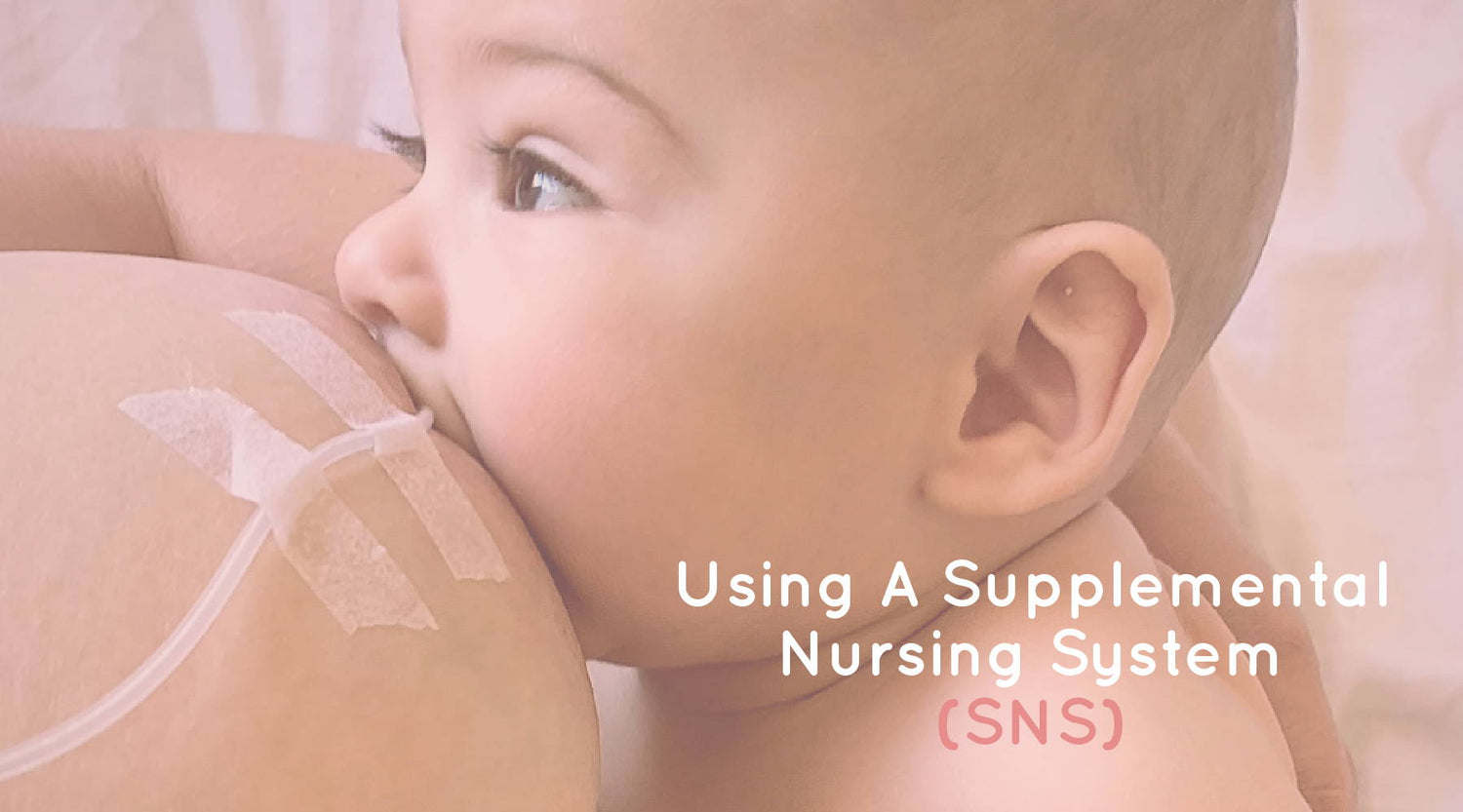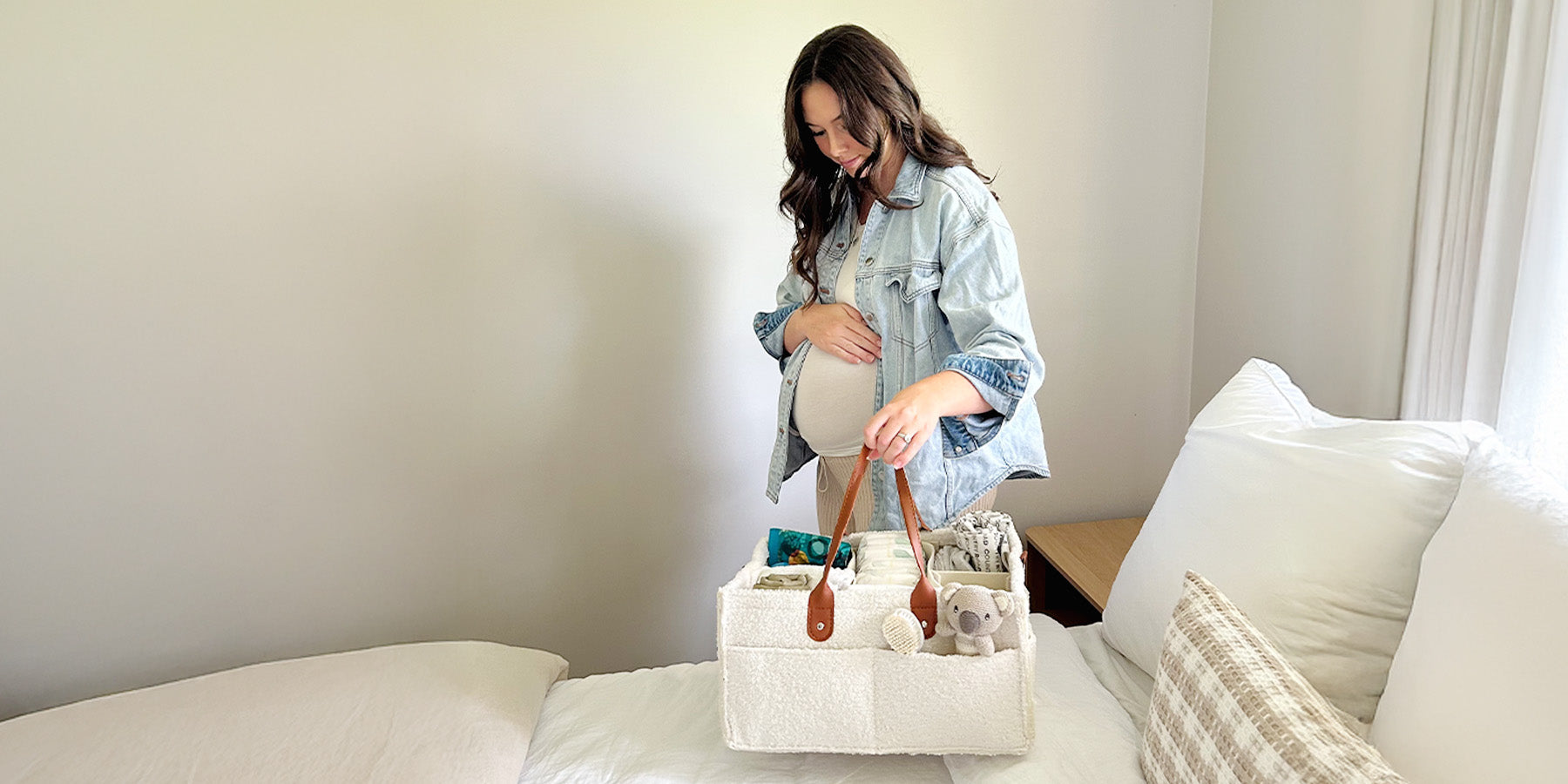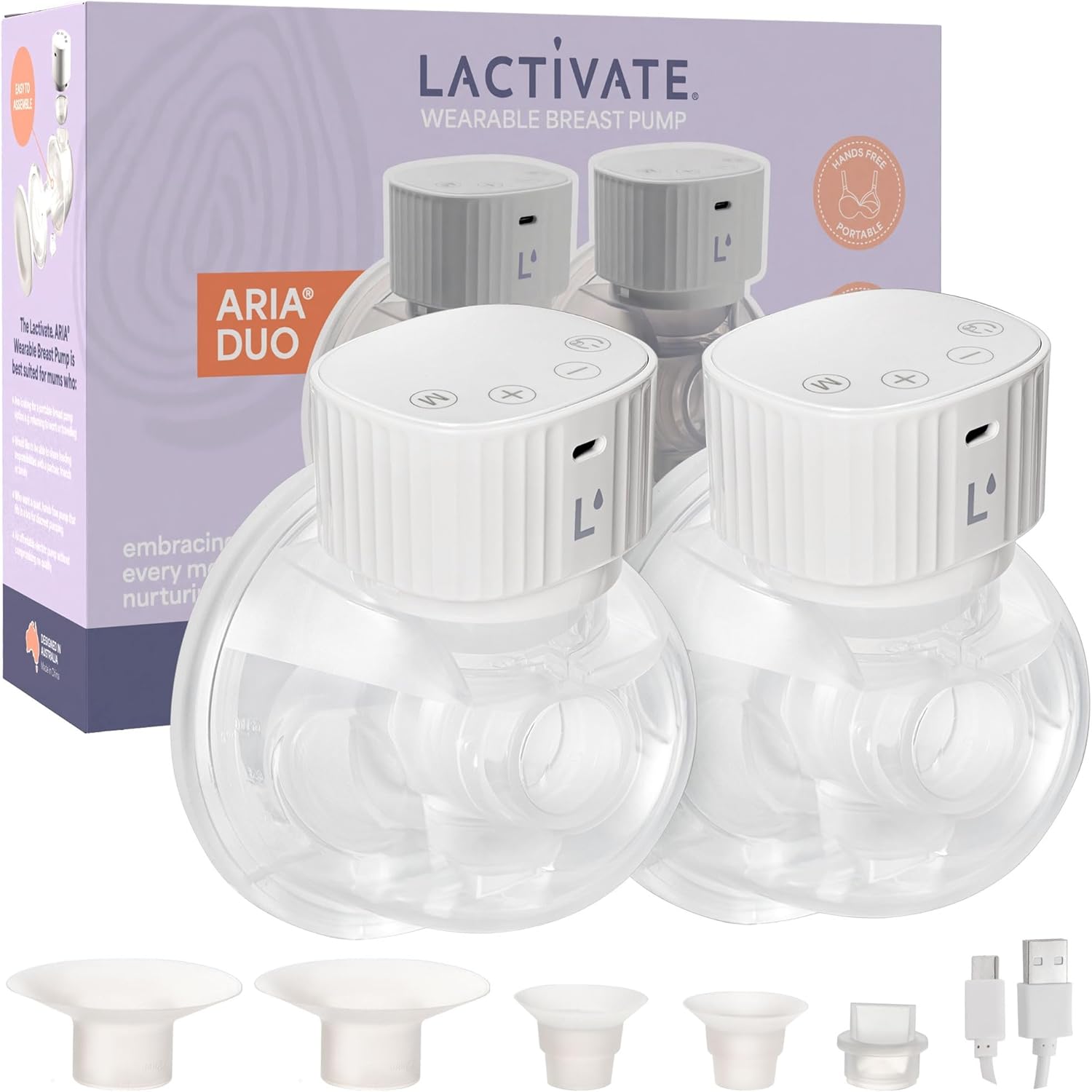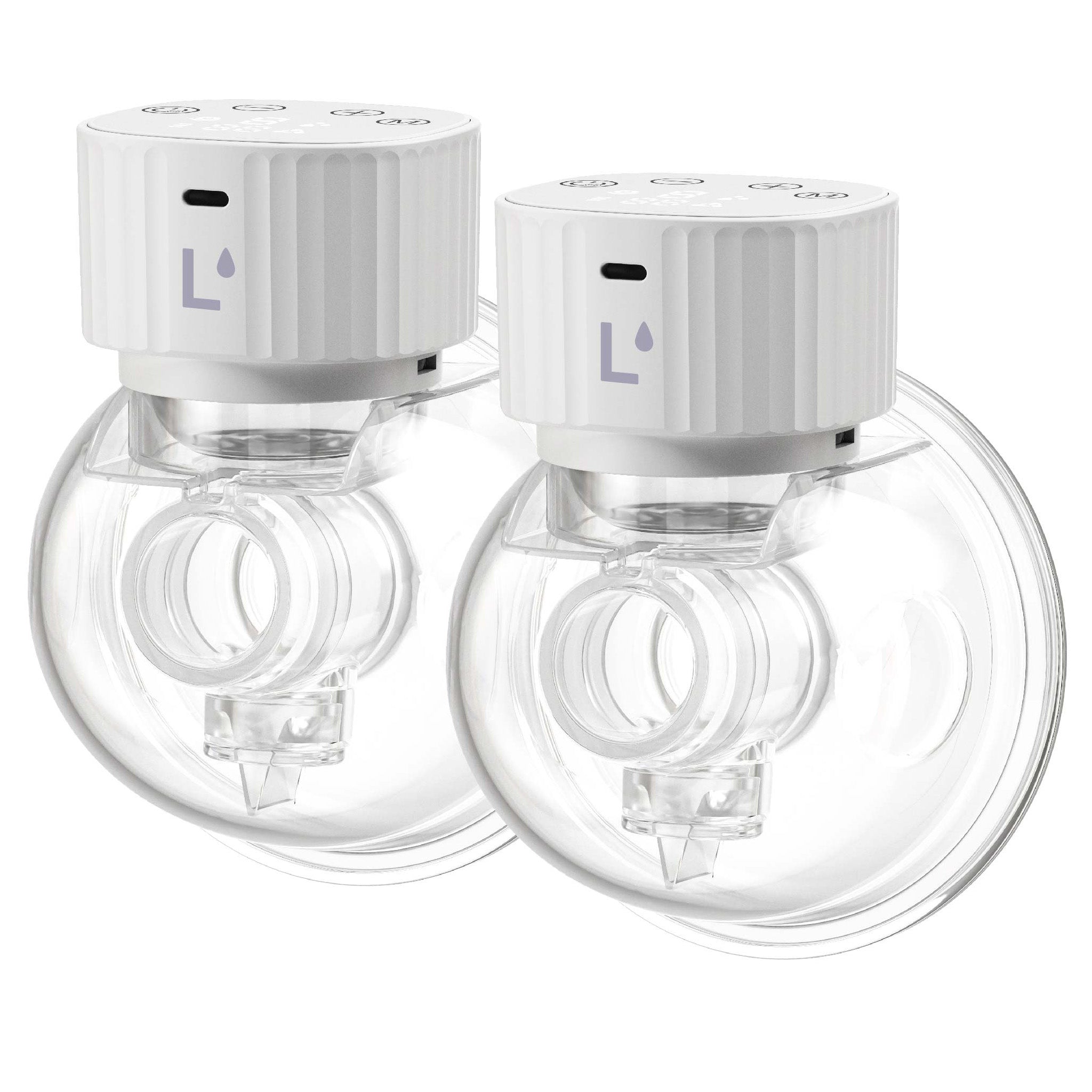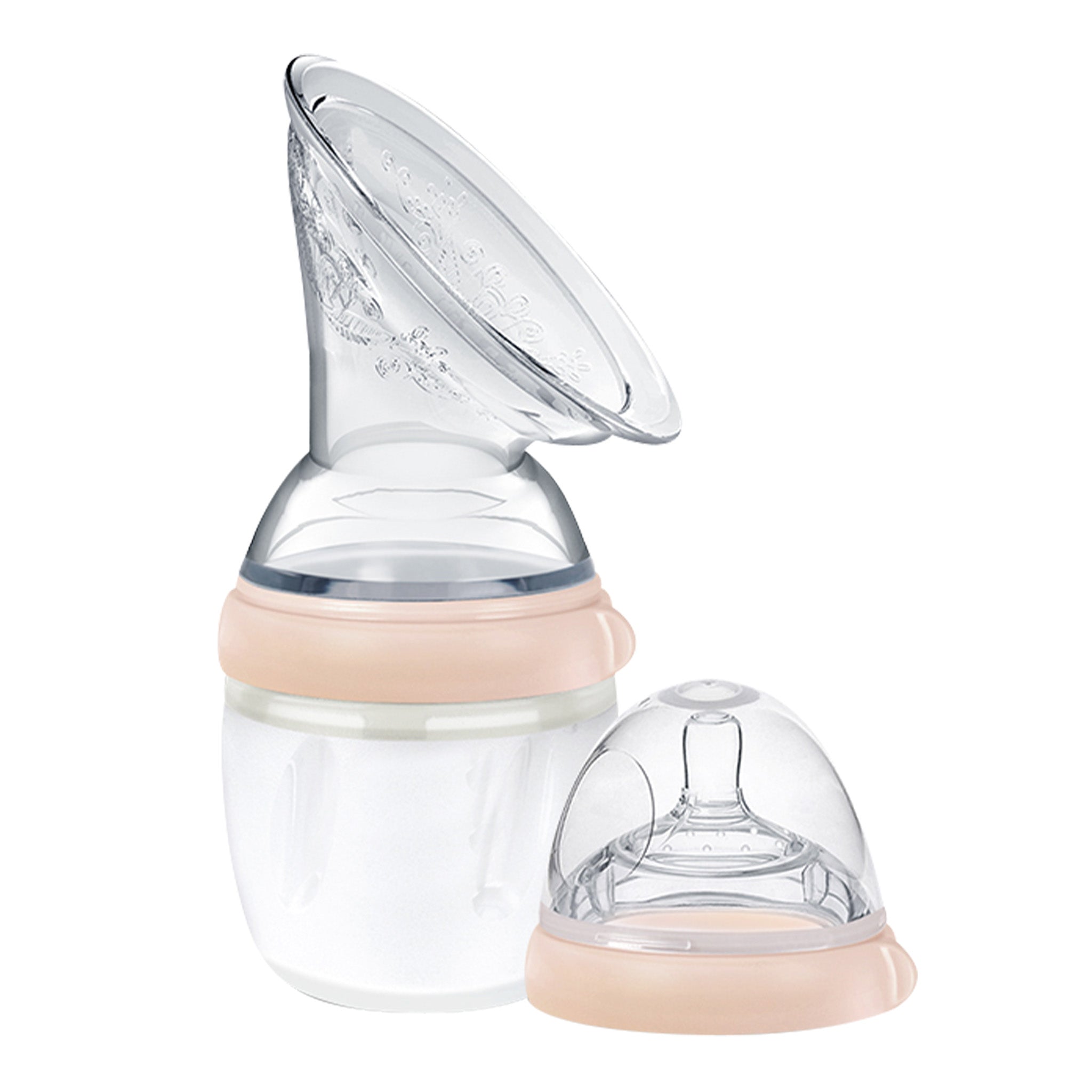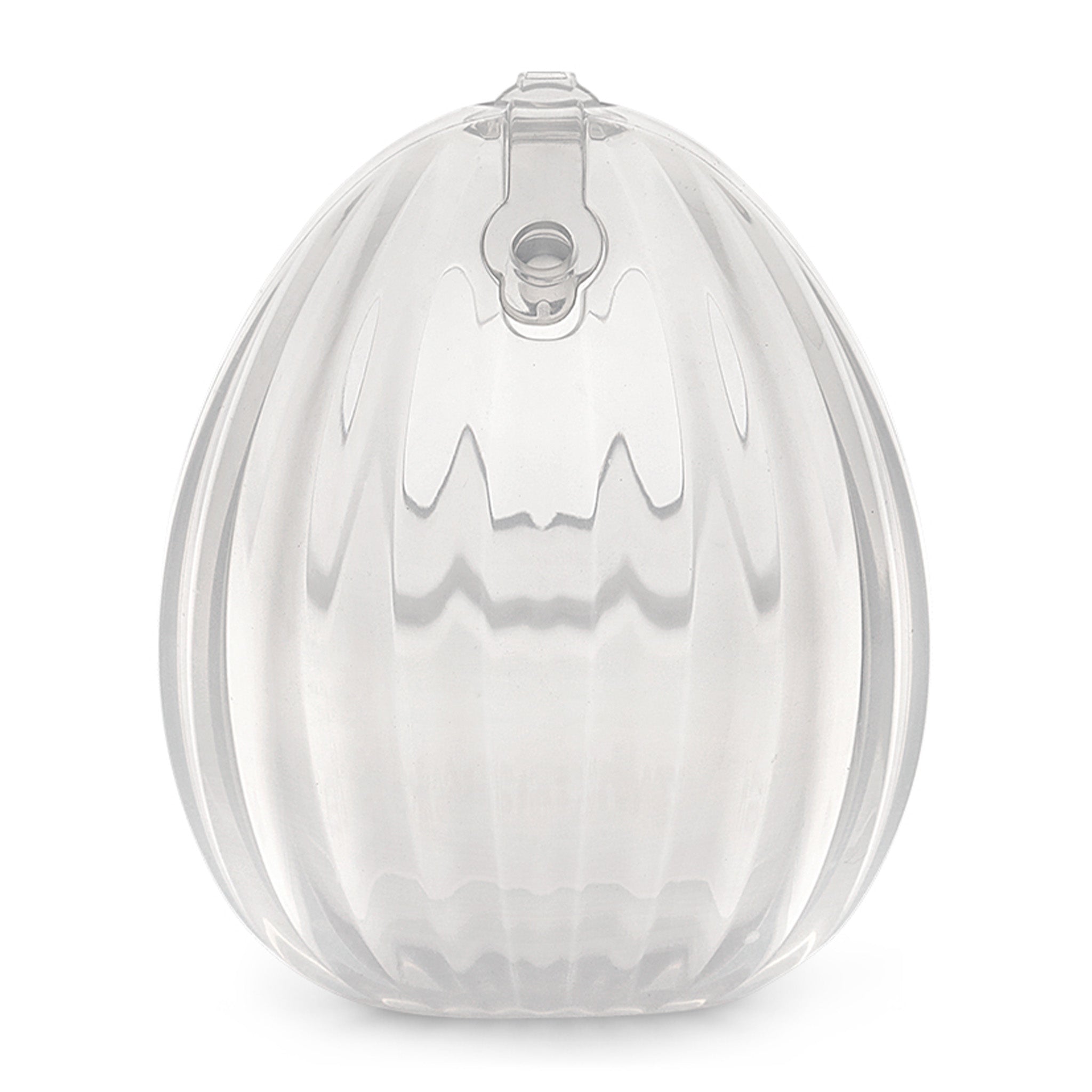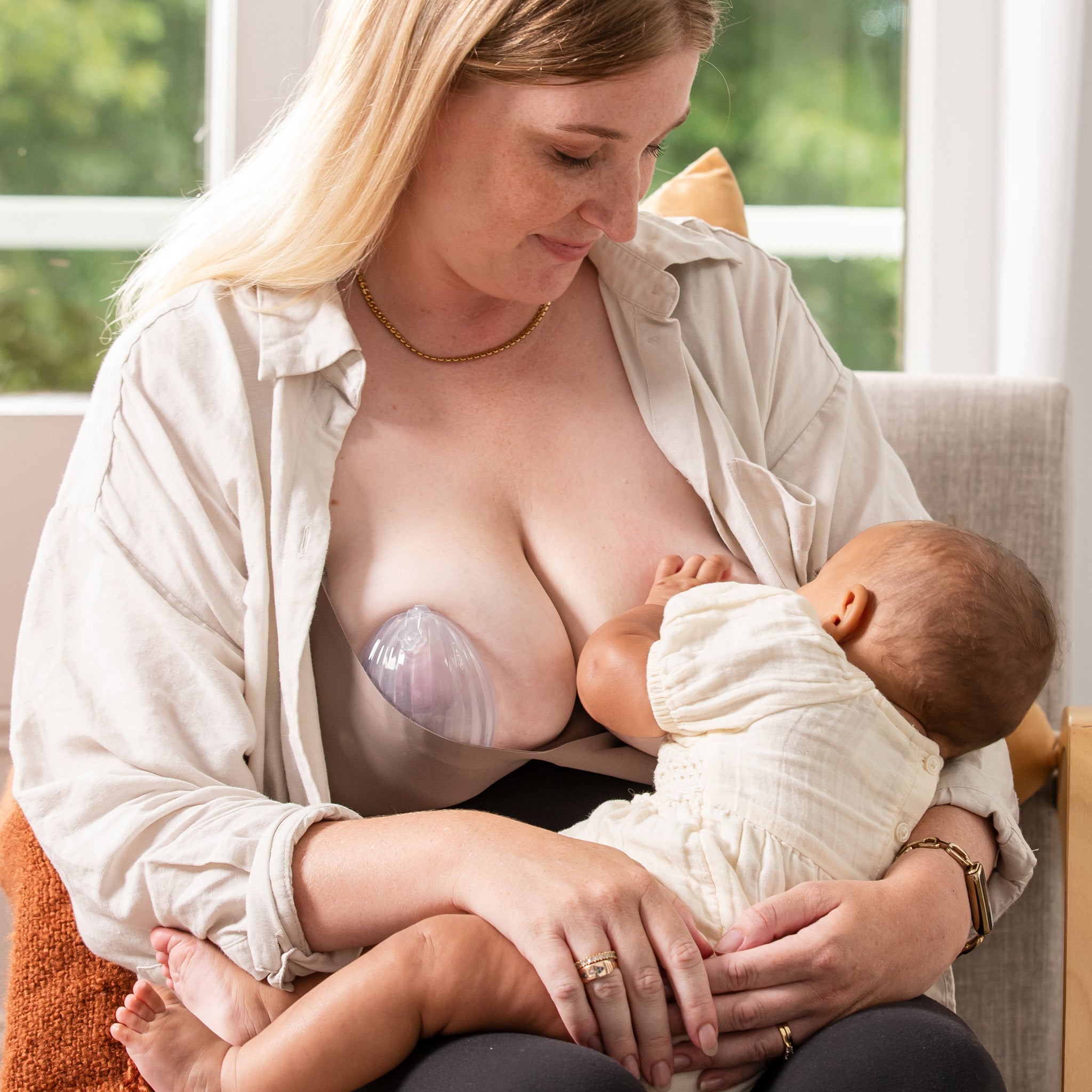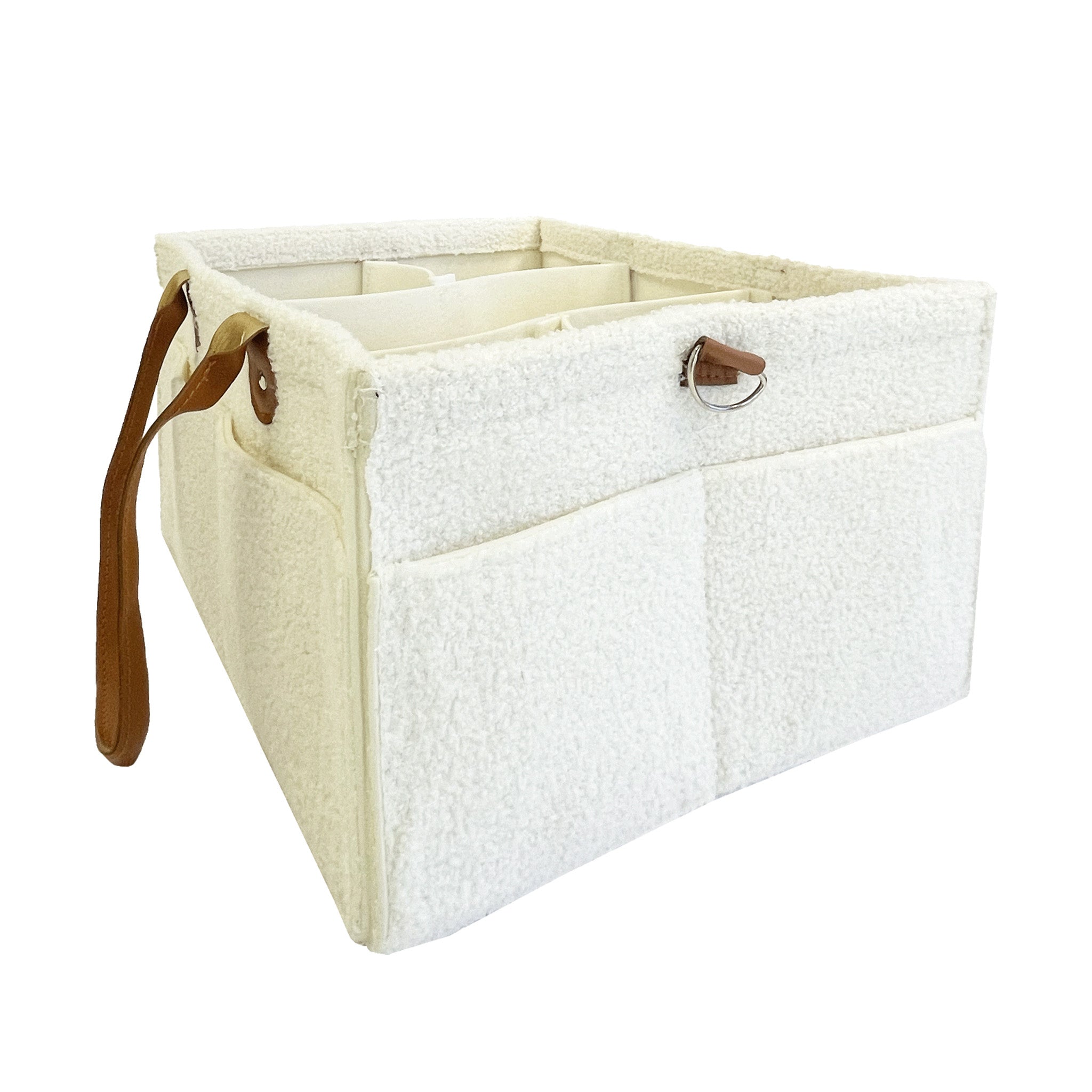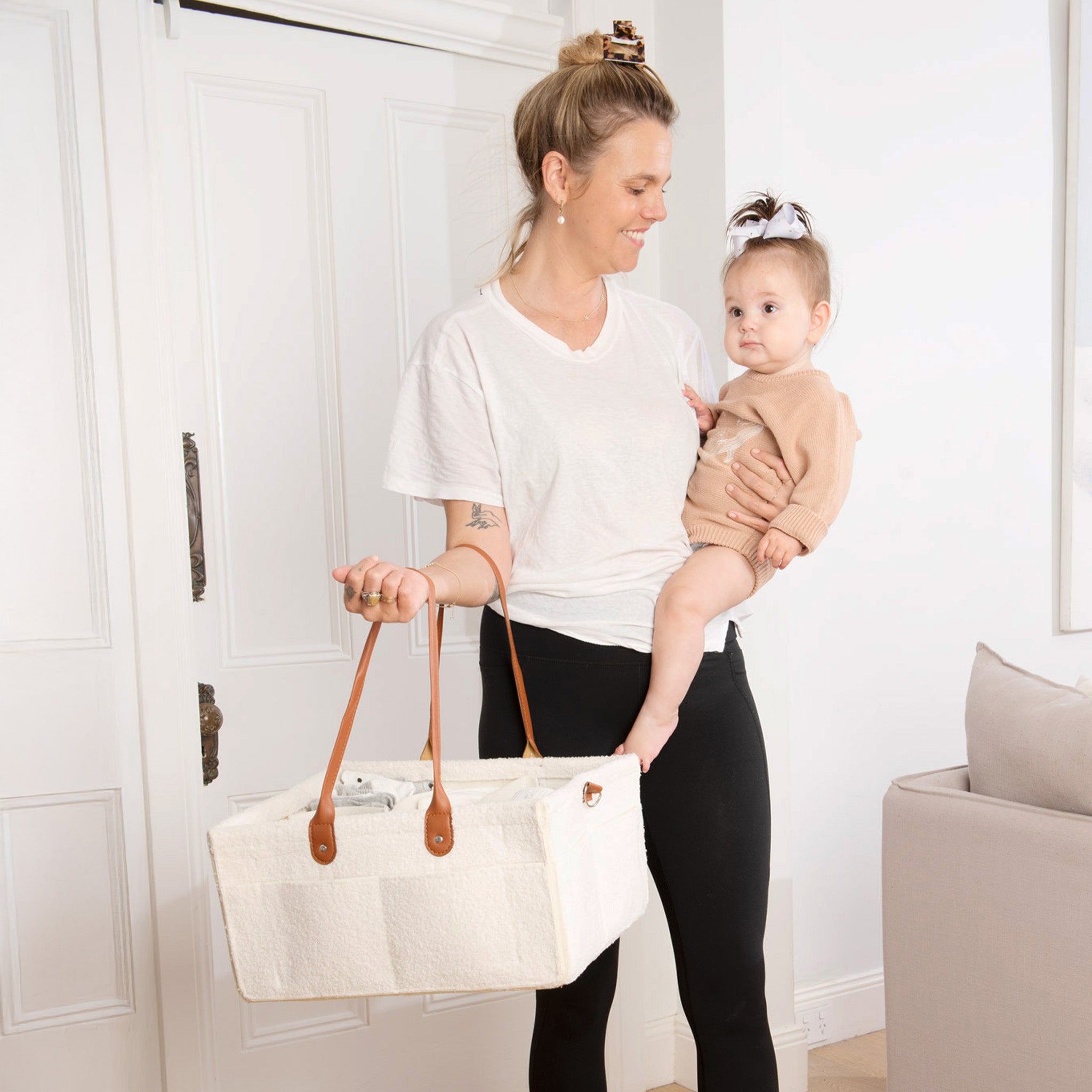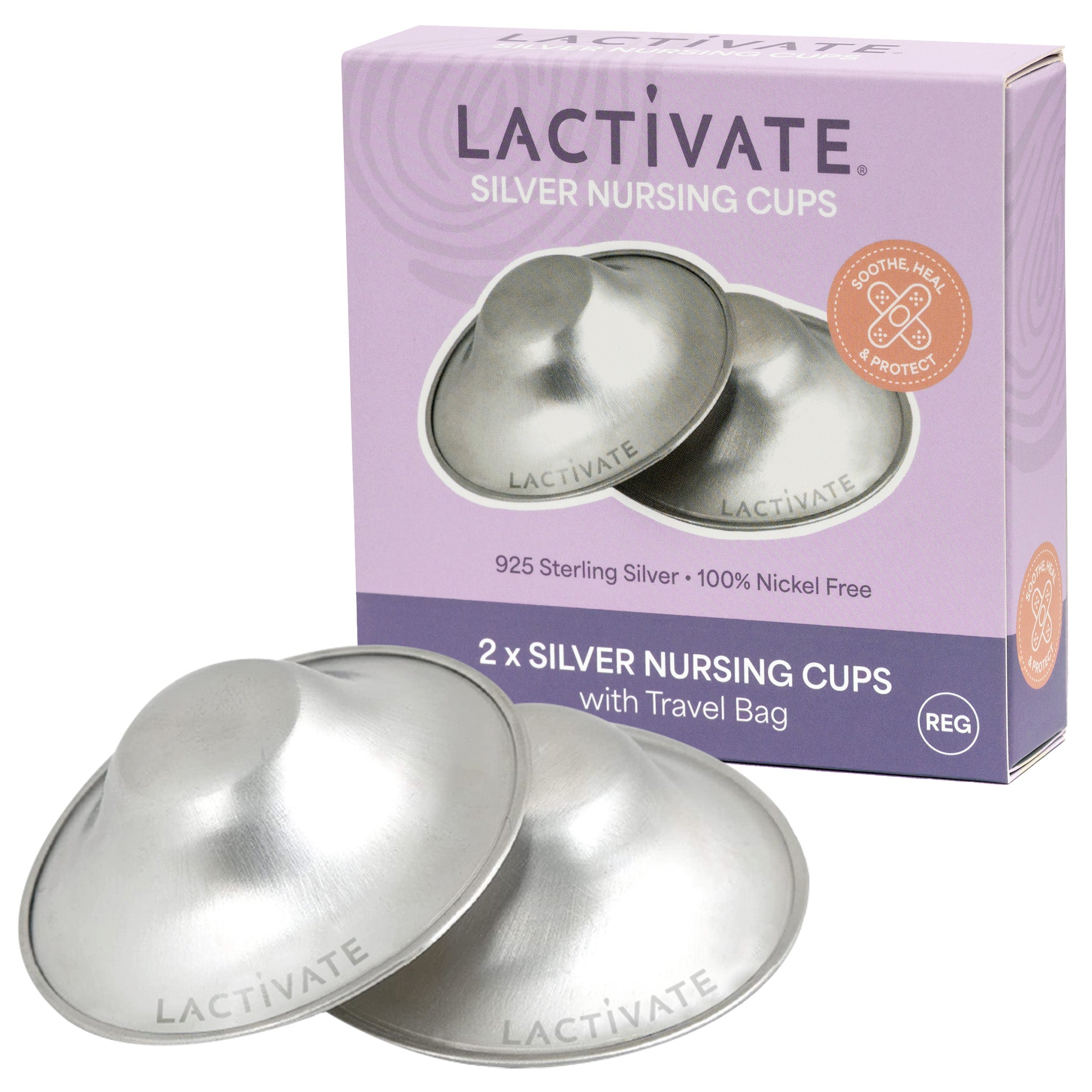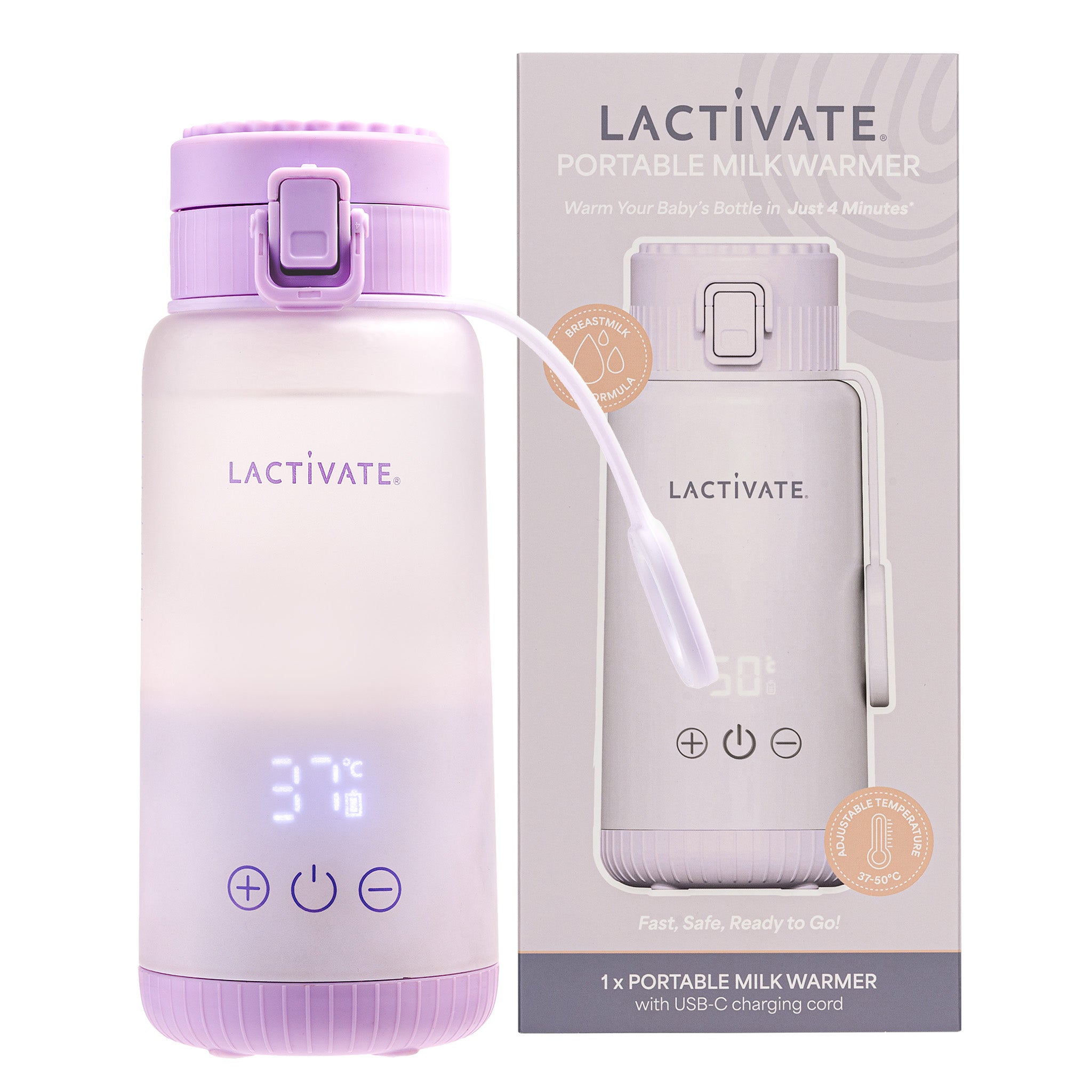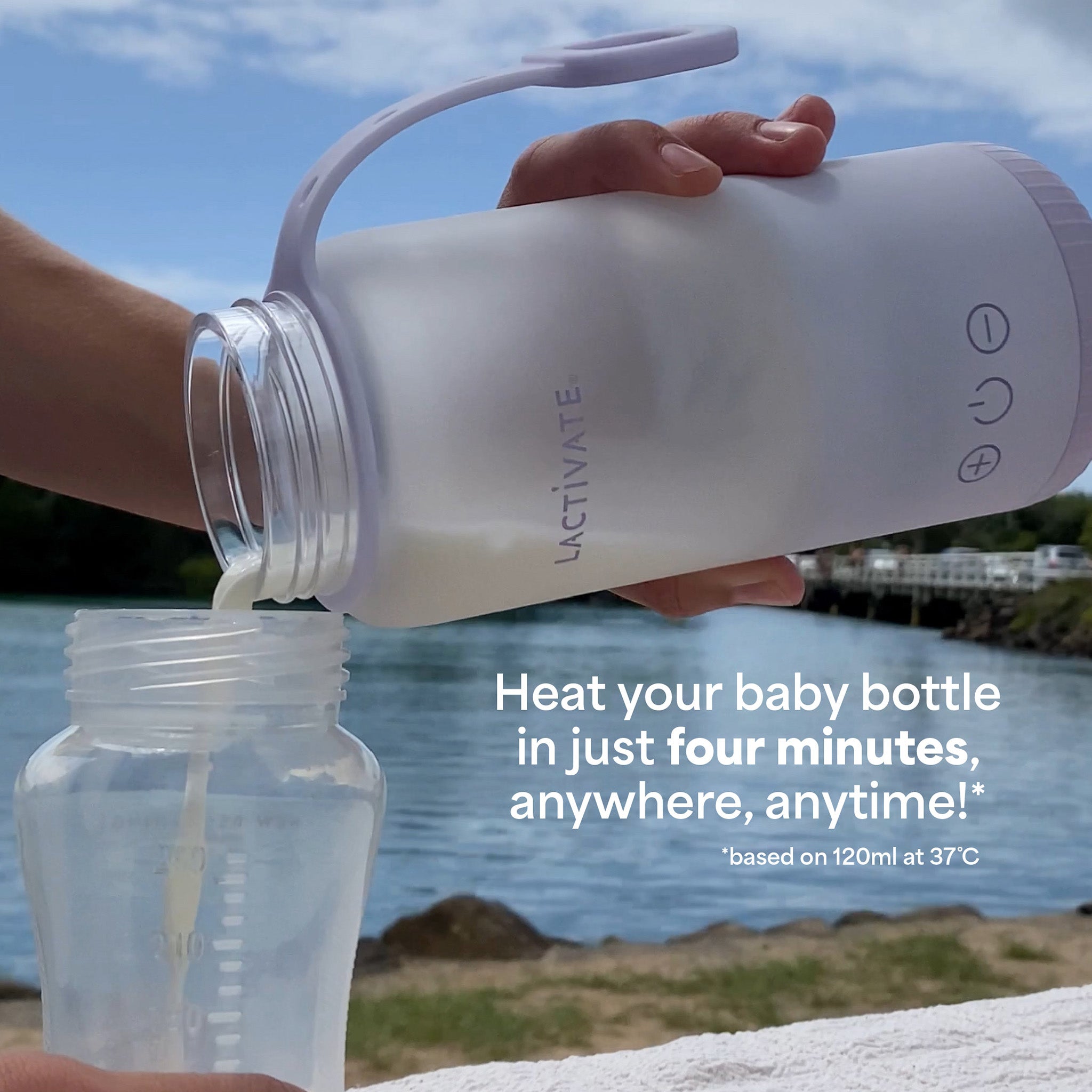There are many reasons why a mama may sometimes need to supplement her baby with expressed breast milk or formula.
While giving this little bit extra via a bottle is usually what we think of first, a Supplemental Nursing System or SNS can be a super handy option for supplementing mamas who want to avoid nipple confusion and keep baby at the breast full time.
So, what IS an SNS and why might you need to use one? We spoke to Doula, Breastfeeding Counsellor and IBCLC-in-training Aimee Sing from BirthAims to get the lowdown.
Featured product: Haakaa Supplemental Nursing System
What is an SNS?
An SNS or supplemental nursing system is a device that allows babies to access extra ('supplemental') milk at the breast as opposed to via a bottle. Usually, an SNS will consist of a container or bottle with expressed breast milk, donor milk or formula with fine tubing attached which is taped next to the nipple. When baby latches and sucks at the breast, milk is drawn through the tube along with any milk from the breast itself.
Why is an SNS usually used?
"Supplemental nursing systems are typically used to enable delivery of supplemental feeds to baby while keeping them at the breast," says Aimee. There are many reasons why a mama might use an SNS and these include:
- For babies requiring additional supplementation beyond the milk that mum is producing.
- If baby has a 'weak' suck, is lethargic, premature or easily tires, a SNS can be used to deliver more milk in less time.
- During periods of breast refusal, some mothers find that using a SNS can help get baby to, and keep baby at, the breast for longer periods.
- In situations where a woman is trying to induce lactation or re-lactate, an SNS can help keep the baby at the breast to stimulate milk production
- For adopted or surrogate babies, a SNS can be used by the mother to provide feeds to the baby at her own breast
- If nipple confusion or nipple preference is occurring, where a baby refuses the breast in favour of a bottle or other feeding method, a SNS can help the baby to come to and stay at the breast
An SNS can also be used to 'finger feed' a baby which can help mothers (and care providers) to either assess a baby's latch, work towards correcting it or provide supplemental feeds to a baby having difficulty latching to the breast, a bottle or both.
Why an SNS and not a bottle?
So, why choose an SNS instead of the more traditional bottle? A whole host of reasons, according to Aimee. "Providing supplemental feeds at the breast can help to minimise nipple confusion or preference and increase the mother's milk supply while helping to reduce length of time of feeds and assist with the hormonal and physical aspects associated with breastfeeding." Supplementing baby with a bottle can provide the extra nutrients/calories bub needs but it can sometimes lead to an increased risk of breast refusal and/or nipple confusion and it won't assist with building mums supply like an SNS can.
Featured product: Haakaa Supplemental Nursing System
How should an SNS be introduced?
An SNS can sometimes be a little tricky to introduce and use as its use is very dependent on your specific situation, which is why seeking support from a breastfeeding professional, like an IBCLC or Breastfeeding Counsellor is always recommended.
For mums who have already introduced or are about to introduce an SNS to their bub, Aimee recommends a slow and steady approach that works with where bub is currently at with their feeding and progresses from there. Some other advice worth noting includes:
- For babies who are refusing the breast entirely, starting a feed in whatever way the baby is happy to feed (cup, syringe or bottle) and then transitioning to the breast can be an option.
- Some mums find that for babies who have difficulty latching to, or refuse to latch to, the breast, using a nipple shield at the start of a feed and then switching over to the breast can make a difference.
- For a baby who is willing to latch to the breast, but is unsettled due to a slow flow, then pumping, using warm compresses and/or massaging the breast until the milk flows (encouraging a let down), then latching the baby at the breast once the milk is flowing, can keep baby at the breast and settled for longer. Once the flow slows, using breast compressions to maintain the flow and encourage another let down can be helpful, and if the baby is still fussing and unwilling to remain at the breast, then introducing the SNS can keep the baby feeding at the breast for longer.
What else should we know about using an SNS?
An SNS can be a super useful tool for many mums and bubs during their breastfeeding journey. It is not however, a one size fits all method and there are some instances where it may not be effective or appropriate. "Many women worry that they don't have enough milk and end up providing supplementation for fear of not having an adequate milk supply," says Aimee. "If your baby is having at least 5-6 heavily wet nappies and regular, soft bowel movements, is alert and well, meeting developmental milestones, and is fairly content, then they are getting enough milk." In this case, an SNS is not going to add anything to your feeding regime.
Similarly, an SNS may not work adequately for babies with a weak latch or suck. "Babies must be able to suck adequately to draw the milk from the bottle through the tube," says Aimee. "In these instances, the baby is no more likely to get milk from the SNS than they are from the breast, and consequently may require further support and follow up from a lactation consultant."
It is also important to be aware of and protect your supply, even when supplementing at the breast. "Any supplementation of milk, even while at the breast, can result in reduced milk supply," says Aimee. "If using an SNS to provide additional supplementation, I encourage women to also ensure they are pumping frequently to stimulate breastmilk supply." Feeding and/or pumping every 2-3 hours, or 8-12 times in 24 hours is necessary to maintain an adequate supply. In mums dealing with low supply, increasing the frequency of feeding and pumping can help to increase milk supply. Supply = demand, the more milk you take, the more milk they'll make.

